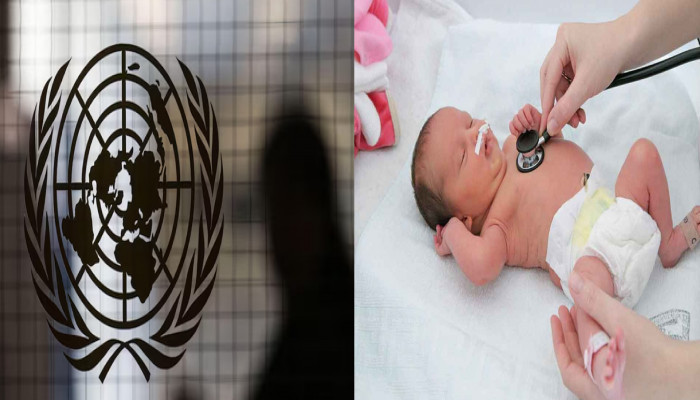'Exemplar': UN hails India's progress in child mortality reduction
- In Reports
- 01:57 PM, Mar 27, 2025
- Myind Staff
The United Nations has praised India's efforts in reducing preventable child deaths, calling them "exemplar." The country has saved millions of young lives through strategic investments in its health system, with initiatives like Ayushman Bharat playing a key role.
A report by the United Nations Inter-agency Group for Child Mortality Estimation, released on Tuesday, highlighted India as one of five "exemplar" countries in child mortality reduction. Along with India, Nepal, Senegal, Ghana, and Burundi were recognised for their diverse strategies that have helped lower preventable child deaths. The report stated that these nations demonstrate that through "political will, evidence-based strategies and sustained investments, even resource-constrained settings facing unique challenges can achieve substantial reductions in mortality, bringing the world closer to an end to preventable child deaths". The report stated that India has improved due to investments in the health system.
"Through strategic investments in its health system, India has already saved millions of young lives and paved the way to ensure healthy lives for millions more, it said. The report highlighted that since 2000, India achieved an under-five mortality reduction of 70 per cent and a neonatal mortality reduction of 61 per cent, driven by overlapping measures to increase health coverage, enhance available interventions and develop health infrastructure and human resources", the report said. It gave the example of Ayushman Bharat, which is the world's largest health insurance scheme, providing annual coverage of nearly USD 5,500 per family per year. Every pregnant woman in India has the right to free delivery, including caesarean section, along with free transport, medications, diagnostics and dietary support for infant care in public health institutions, it noted.
To ensure that healthcare services are accessible to all, India has improved its infrastructure by setting up maternity waiting homes, maternal and child health wings, newborn stabilisation units, sick newborn care units, mother care units, and a special programme for birth defect screening. Additionally, measures such as antenatal corticosteroids for preterm labour, the use of continuous positive airway pressure, and follow-up for vision and hearing help improve newborn survival. This helps millions of mothers have healthy pregnancies and give birth to healthy babies each year. India has also focused on training and placing skilled birth attendants, such as midwives and community health workers, to provide the right care for mothers and babies, it said. The report also mentioned that data systems and digital tracking of maternal, newborn, and child health indicators are constantly being improved to support decisions based on evidence.
It stated that despite “differing geographies, economic conditions and health system structures, Nepal, Senegal, India, Ghana and Burundi have all outpaced the global and their respective regional declines in child mortality through strong governance, strategic investments in health and scale-up of evidence-based health interventions". Successful health systems focus on universal access and community-based care, use data to make smart decisions and continuously improve quality, according to the report. They also expand immunisation and maternal and newborn health programs to prevent childhood illnesses and ensure seamless care from home to hospitals. Additionally, innovative health financing models help make healthcare both sustainable and accessible. The UN agency noted that several low and lower-middle-income countries have outperformed the global average in reducing under-five mortality since 2000. Countries like Angola, Bhutan, Bolivia, Cabo Verde, India, Morocco, Senegal, Tanzania and Zambia have all reduced their under-five mortality rates by more than two-thirds since 2000.
In the year 2000, India had the highest number of measles-related deaths among children under five. At that time, only 56% of infants were vaccinated against measles, leading to 189,000 deaths from the disease. By 2023, the measles vaccination rate for infants had risen to 93%, and deaths among children under five due to measles dropped by 97% to just 5,200 cases. The report highlighted that the total number of children dying globally before turning five fell to 4.8 million in 2023. Meanwhile, the number of stillbirths also declined but remained high at 1.9 million. Since 2000, deaths among children have dropped by more than half, and stillbirths have decreased by over a third, thanks to continued efforts and investments in child survival worldwide. In 2022, the world achieved a historic milestone as child deaths fell just below 5 million for the first time. However, progress has slowed, and many children are still dying from preventable causes.
"Millions of children are alive today because of the global commitment to proven interventions, such as vaccines, nutrition and access to safe water and basic sanitation," UNICEF Executive Director Catherine Russell said. "Bringing preventable child deaths to a record low is a remarkable achievement. But without the right policy choices and adequate investment, we risk reversing these hard-earned gains, with millions more children dying from preventable causes. We cannot allow that to happen," he added.







Comments